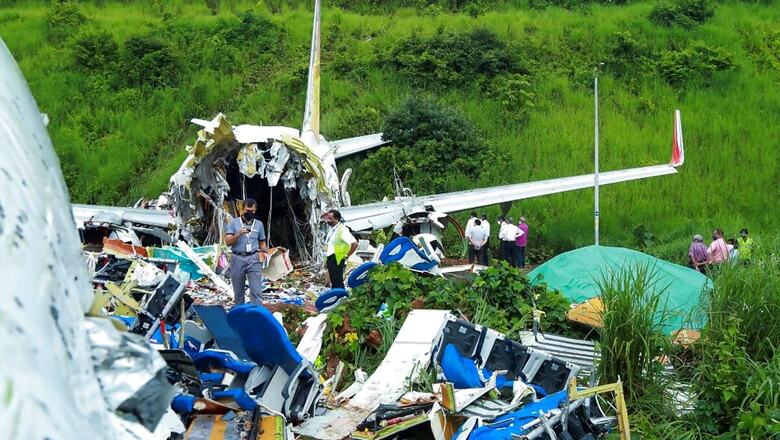
views
A day after the crash of an Air India Express plane, aviation safety expert Captain Ranganathan, who had earlier flagged concerns about the Kozhikode airport runway, said the Directorate General of Civil Aviation (DGCA) should not allow landing of flights during monsoons on runway 10 at the aerodrome.
The ill-fated plane, coming from Dubai with 190 people, overshot runway 10, went down 35 feet on a slope and broke into two pieces. The crash killed at least 18 people, including the flight's two pilots, and scores were injured.
"Death due to an accident is something which happens when you don't know but when you knew the danger existed and you were warned about it and you took no action and an accident takes place, then it is definitely murder," he said.
In 2011, Ranganathan had warned that flights landing on runway 10 in tailwind conditions in rain at the Kozhikode airport endanger the lives of people onboard those flights.
On Saturday, he said the (DGCA) should enforce the correct runway code for Kozhikode airport.
"No aircraft larger than a 737 or a 320 should be permitted to land there. They should not permit any landing during monsoons on runway 10. The DGCA should enforce that all airlines should comply and do their monsoon training before the monsoons what is called ALAR training they have to do it without failure," he said.
ALAR is Approach and Landing Accident Reduction.
In June 2011, Ranganathan flagged concerns about the runway in a communication to then Civil Aviation Secretary Nasim Zaidi in June 2011. Ranganathan was then a member of the operations group of the Civil Aviation Safety Advisory Committee (CASAC).
"... in spite of the danger if the crew accept a landing in wet and tailwind conditions, their concept of ALAR is very poor," he had said in the communication.
It had come against the backdrop of an Air India Express aircraft crash at Mangalore airport in 2010. As many as 158 people had died in the crash. "... all the flights that land on Runway 10 in the tailwind conditions in rain, are endangering the lives of all on board," Ranganathan had said. With tailwind conditions, the descent of an aircraft at the time of landing might be affected.
When asked whether he had received any reply or feedback on his report, Ranganathan replied in the negative.
Kozhikode airport comes under the Airports Authority of India (AAI). The airport has a tabletop runway.
On claims in certain quarters that the landing gear of the Air India Express plane might not have been deployed on Friday, Ranganathan ruled out such a possibility.
"If the landing gear was not deployed, he would have stopped on the runway because the friction would have been so much if he landed on the belly. The 737 design is if your landing gear is not deployed it will touch down on the engines. The friction caused by the engines would have stopped the aircraft. So that is a complete misnomer," he said.
On what could have gone wrong, Ranganathan said the pilot should not have attempted to land with strong tailwind.
"During monsoons the winds are westerly and he should use only runway 28. The temptation to use runway 10 is only because the minima is lower and you can come below the clouds while for runway 28, he probably encountered clouds and he could not see the runway," he said. "If you are very tired, the tendency is to try and land. He must have tried to complete the flight as early as possible because you cannot make more than two attempts."
(With inputs from PTI)




















Comments
0 comment